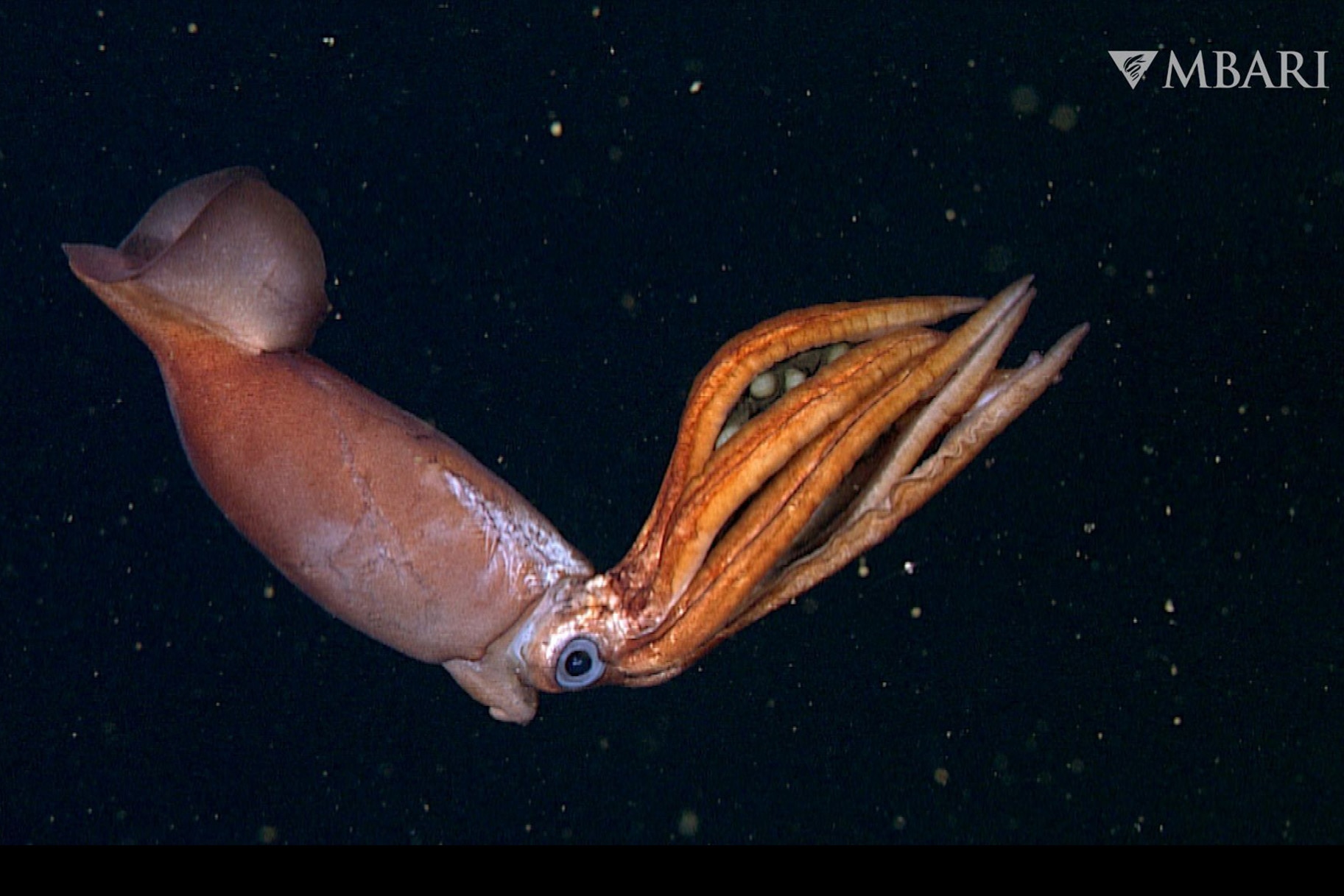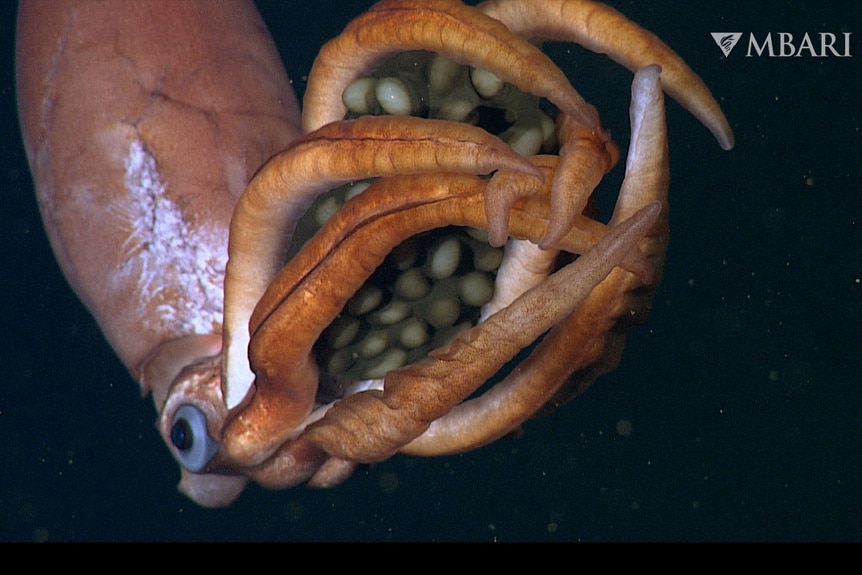Create a free profile to get unlimited access to exclusive videos, sweepstakes, and more!
8,000 Feet Below the Surface, MBARI's Underwater Robots Find New Squid Species with Giant Eggs
And it looks like one of the hardest parenting gigs on the entire planet.

In the mid-'90s, NBC’s seaQuest DSV (now streaming on Peacock) took viewers into the deep in an experimental research submarine. Set in the near future (though, that near future was 2018 when the show first aired), a planet rocked by climate disasters and resource shortages sends humanity underwater. The seaQuest deep-submergence vehicle (DSV) operates under the purview of the fictional United Earth Oceans Organization, studying the oceans in hope of helping humanity to survive.
In the real-world, scientists aren’t yet living round the clock in submersible research stations, but they are exploring the deep with a collection of submarine robots. Recently, researchers from the Monterey Bay Aquarium Research Institute (MBARI) announced the discovery of a brand-new squid species, notable for clutching oversized eggs to its proverbial chest.
For More on Squid:
Cthulhu Genes? How Cephalopods Evolved Huge brains and All Those Tentacles
Vampire Squid are Chill, but Their Ancestors May Have Been Vicious Killers
Whatever This Shark Escaped From, it was Probably a Leviathan of a Squid
Underwater Robot Spots New Squid with Giant Eggs
Researchers encountered the tentacled underwater critter back in 2015, while piloting a remotely operated vehicle (ROV) called Dock Ricketts, 8,418 feet (2,566 meters) underwater in the Gulf of California. While it’s been almost a decade since the actual discovery, the wheels of science sometimes run slowly and scientists didn’t know what they had until they had time to thoroughly examine it.
Researchers have now examined the footage from a 2015 underwater expedition and surfaced with a new squid species. The discovery was published in the journal Ecology. While the encounter was brief, scientists from MBARI along with colleagues at the GEOMAR Helmholtz Centre for Ocean Research Kiel combed through the footage and compared it with known species in the hope of identifying it. Based on its morphology (body shape and layout), scientists believe it belongs to the family Gonatidae, a group of medium-sized armhook squid.
This animal was similar to known species of Gonatidae with one big exception: Its eggs were about twice as big as those of its relatives. Most squid lay their eggs in the thousands, dumping them into the water column or else in clutches glued to the seafloor, and leaving them to fend for themselves. It’s the biological shotgun approach of blasting out as many babies as possible and hoping that one or two make it through the mortality filter. Other species, including this one, hold onto their eggs and keep them safe until they are ready to hatch.
It’s an energy expensive process that comes at a considerable cost to the brooding parent. Rather than pumping out thousands of eggs, this animal had only a few dozen, each about half an inch across. For reasons which aren’t wholly understood, this species seems to have adapted to producing fewer eggs and investing more heavily in their care. It’s a long-term investment, too, because of the environmental conditions. That far underwater, the temperatures are frigid, there is no real sunlight, and resources are scarcer. Animals tend to adapt by slowing their metabolism and, as a result, scientists estimate the gestation period for these squid eggs is between 3 and 4 years.
“Squid play an important role in the ocean—they’re fierce predators and a vital food source for lots of animals, even humans—but we still have a lot to learn about the squid that live in the deep sea. Advanced underwater robots are helping us better understand the lives of deep-water squids, revealing fascinating new information about their biology and behavior. Each new observation is another piece of the puzzle,” said study author Henk-Jan Hoving, in a statement.
From what we know about cephalopods, it’s the last thing this mother squid will have ever done. While they are protecting their eggs, mother squid don’t eat and instead spend all of their time ensuring their offspring are safe and developing. She would have spent those few years living off of energy reserves and protecting her brood. When the eggs hatched, she would have died in the deep, having completed her task of ensuring the next generation.
We so often think of the deep oceans as lightless and loveless places, but this mother squid and her life-consuming sacrifice demonstrate that life and love can shine even in the most unexpected places.
Watch seaQuest DSV streaming now on Peacock.



























